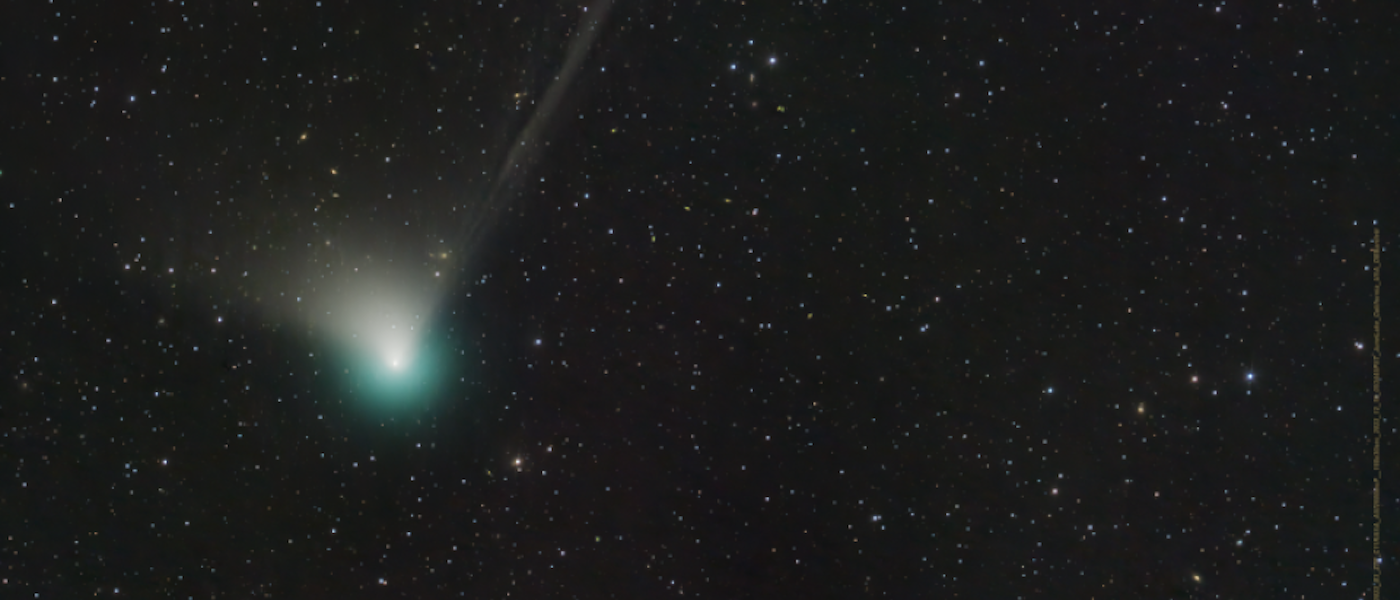How to spot the upcoming ‘green comet’

Have you heard the chatter about the upcoming Comet C/2022 E3, also known as the “green comet”? This comet will be visible with binoculars in our evening skies late January and early February 2023.
Although there is a lot of excitement about this comet, please note that it’s expected to be faint, with a possible peak magnitude of 5.05 in early February. A 5th-magnitude object is just barely visible to the naked eye in very dark, clear, non-light-polluted skies. Binoculars are essential for being able to view this comet.
The comet’s official name is C/2022 E3 Z.T.F. It was discovered in March 2022 by the Zwicky Transient Facility telescope at Mt. Palomar in the San Diego area, which is where the ‘ZTF’ in its name comes from.
At its nearest approach to Earth on Feb. 1-2, the comet will be about 26 million miles away.
This comet is attracting attention in part due to its green color. This is due to the presence in the comet of diatomic carbon, which emits green light when it interacts with ultraviolet radiation from the sun. The comet’s orbit is estimated at 50,000 years, which is also why this comet has been getting attention: It’s the first appearance of C/2022 E3 in 50,000 years.
While the comet will be expected to reach peak brightness in early February, the moon will be in the sky at that time and the moon washes out faint objects like comets.
You can try to see the comet by looking toward the north at midnight on Jan. 27-28, when the comet will be 40 degrees above the north horizon. That is the width of four hands if you hold your hand at arm’s length. Another way to think of it: the comet will be just under halfway from the horizon to the very top of the sky. If you can see the two stars that mark the cup of the Little Dipper (on the side of the cup that doesn't have the handle attached), they will point to the comet’s location.

Interested in learning more about breaking space news stories? Catch a show in LSC's Jennifer Chalsty Planetarium, the biggest planetarium in America. Click here to see what's playing and get showtimes.
